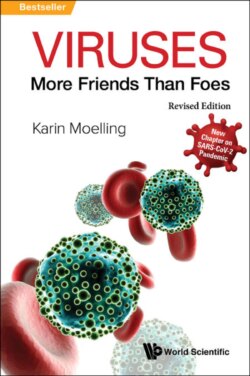Читать книгу Viruses: More Friends Than Foes (Revised Edition) - Karin Moelling - Страница 24
На сайте Литреса книга снята с продажи.
Therapeutics
ОглавлениеTherapeutics against viruses have not been too successful in the past. One such example is influenza virus, against which the number of drugs is very limited. An unusual exception is HIV, against which more than 30 drugs are available. They are taken in triplet combinations which, to this day, have turned out to be extremely successful. Three drugs against different molecular targets, blocking different steps in the life cycle of HIV, prevent the development of drug resistance. This approach has been adopted for other diseases as well, including cancer, where drug-resistant cells also arise quite rapidly.
Coronaviruses do not mutate so rapidly, but here also more than one drug will be required.
A favorite target for antiviral drugs is the virus’s protease enzyme. Many viruses have such an enzyme to trim their proteins, which are often synthesized in large pieces. The viruses need their own proteases so that no confusion can occur with cellular proteases. Protease inhibitors against SARS have been made, and a sculpture of the protease against SARS is on exposition in Singapore with a protease inhibitor bound to it. This will soon be designed accordingly against CoV-2. A protease inhibitor was also successful against HIV. Hundreds of different drugs are under investigation around the world against CoV-2. It would be fastest if a drug could be redirected to this new disease, and tested rapidly such as drugs against Ebola, HIV, malaria and others. This would speed up the process for rapid applications. Furthermore, in several cases, nucleotide analogues have proved useful as inhibitors; their incorporation into the progeny RNA leads to its destruction. However, the CoV-2 repair system may perhaps prevent this. Many drugs are under investigation and more are coming, almost daily.
Interestingly, some drugs may help save lives which are directed against secondary complications not the virus itself, such as anticoagulants or drugs against hyperimmune responses, and may reduce the sometimes harmfully long respirator periods.
